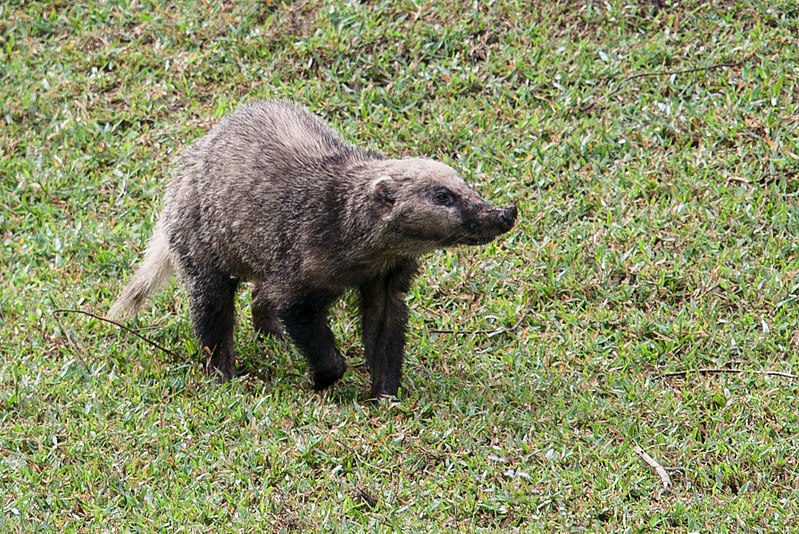After a long hiatus, Nary the environmental (very) slow loris has returned to bring a few more articles on the stranger side of Cambodian wildlife. This episode she looks at a curious critter which looks part Brock, part Miss Piggy- Arctonyx collaris, aka the hog badger.
What do you get if you put the nose of a pig on a large mustelid and place it in a Southeast Asian forest?
The answer is, obviously, a hog badger (Arctonyx collaris).
This curious creature has medium-length brown hair on a stout body, a white throat, two black stripes on its elongated white face and a somewhat bizarre pink, pig-like snout.
The hog badger grows to between 55-70 cm, with a tail of 12-17 cm can weigh somewhere in the region of 7 – 14 kg- making it one of the world’s largest mustelids (the same family as weasels, otters, ferrets wolverines etc.) by body mass.
The hog badger does pass some resemblance to a European badger, but it is generally smaller, with larger claws on the front feet. Its tail has long white hairs, and its front feet have white claws.

The Hog badger lives in tropical evergreen forests and grasslands from north-eastern India and eastern Bangladesh, southern China, Thailand and Indochina. Wildlife Alliance has recorded specimens in Koh Kong province. They are active during both the day and night, and show little fear of humans.
Their diet consists of mainly of fruits, roots and small animals such as worms, grubs and small mammals, which they use the peculiar nose to detect and burrow for.
Like its distant relatives in the badger family, the hog badger can be bad-tempered, and has powerful jaws and claws to defend itself. The only natural predators to the species are larger cats such as leopards and tigers. They have the ability to escape from danger by burying themselves quickly in the ground and burrowing to safety. The distinctive pattern- technically known as aposematism- is used to warn other animals to stay well away.
Breeding season is usually between April-September and litters of 2-4 young are weaned by the mother for around 4 months. Life expectancy is around 14 years.
Unlike the European badger, the hog badger is solitary, and controls a territory until mating season. They appear to mark this territory with secretions from their anal glands.
30 years ago, the hog badger was considered common in Thailand, Laos and Cambodia, but poaching, snare traps and excessive hunting (especially using dogs) has led to numbers decreasing and has moved from ‘least concern’ to ‘vulnerable’ on the IUCN list.
Human consumption of hog badgers varies from place to place within their natural range, with the Chinese farming them for meat and some hill tribes across their range hunting them for food, whilst others consider the flesh as taboo.
They are a protected species in India, Thailand and Cambodia.
Photos: Huai Kha Khaeng Wildlife Sanctuary
Sources: animaldiversity.org
Read more:
Critters I- The Furries
Critters II- Bat Country
Critters III- Cats
Critters IV- Bearcat
